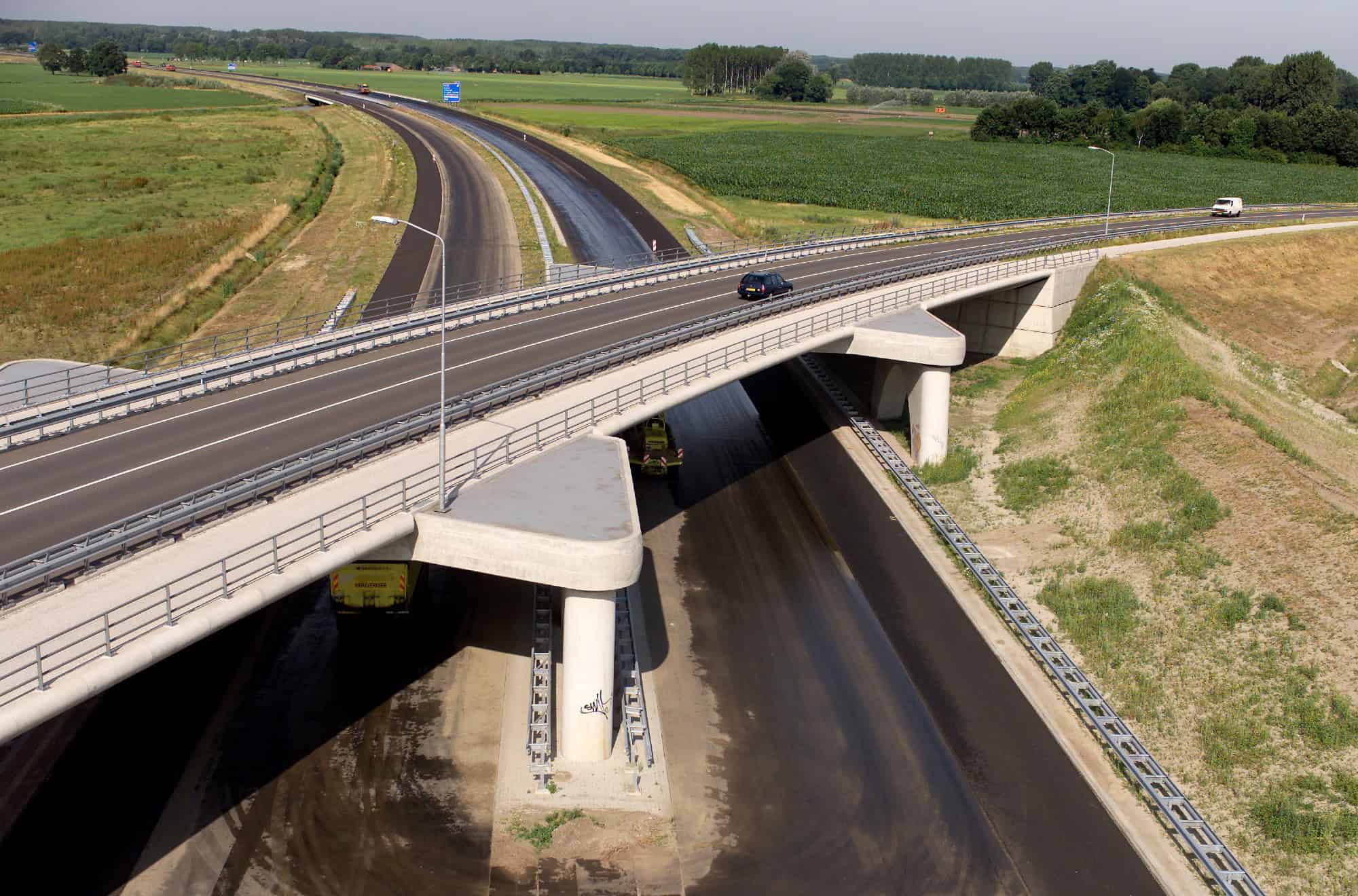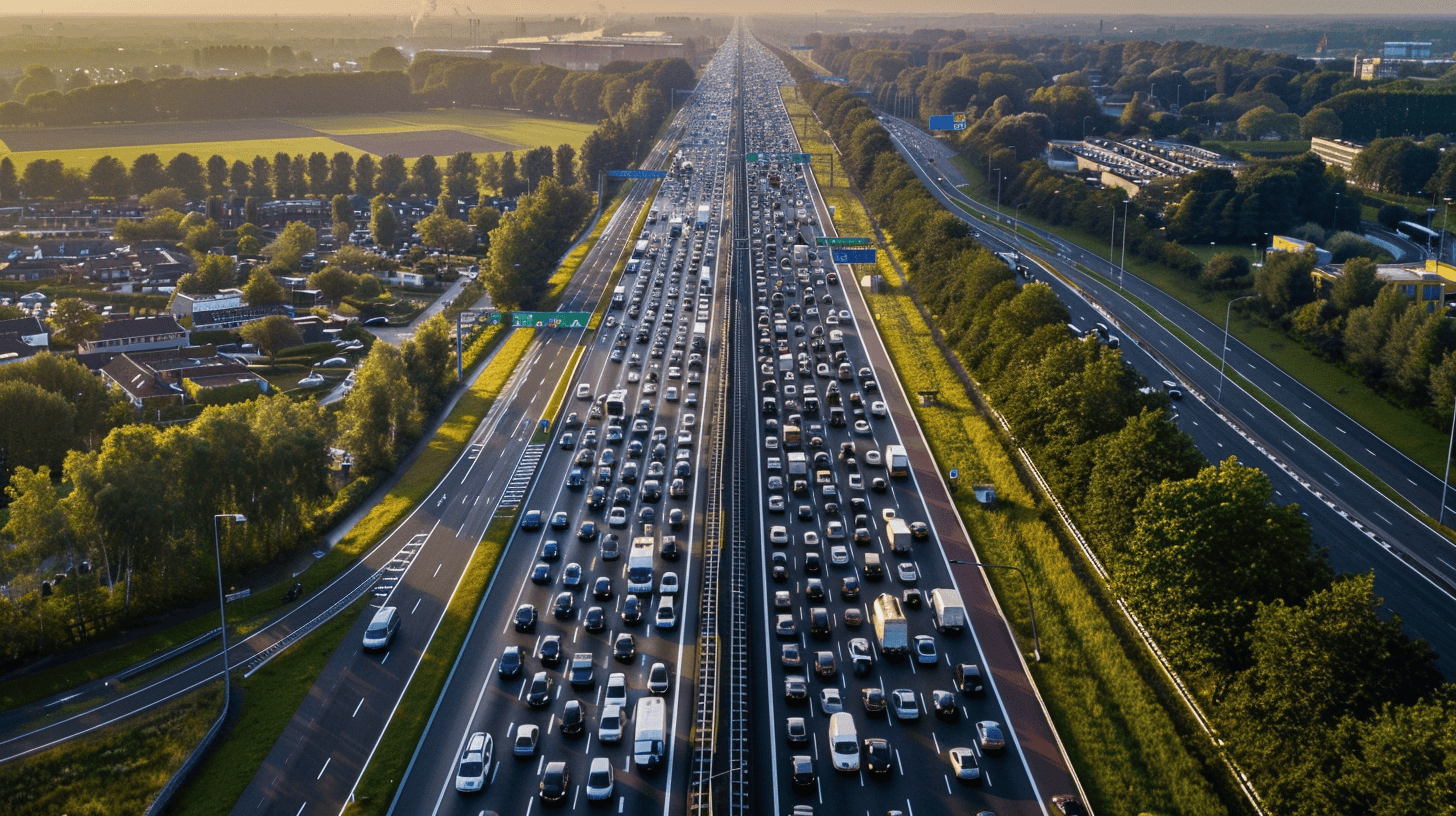Infra
Dutch infrastructure under pressure. Rijkswaterstaat director: Urgent need for innovative technology

The Dutch infrastructure is facing a major challenge. Roads are wearing out due to more and more heavy traffic, and many bridges and tunnels are aging considerably. Many waterways are also in need of renewal. Martin Wijnen, director general of Rijkswaterstaat, recently shared his vision of the future during the kickoff event Enschede Slush’D. “Innovative technology will be indispensable in the coming years,” he said.
The Dutch infrastructure is of great importance to the functioning of our country. With just over 3,000 kilometers of highways and nearly 3,500 kilometers of waterways, the network is an essential link for the economy, mobility, and daily lives of millions of people. In short: it is essential to maintain our (water) roads well.
For example, if you look at traffic in the 1990s on the Van Brienenoord Bridge, it was extremely quiet. Today, however, some 220,000 vehicles cross that bridge every day, Wijnen knows. “So putting this bridge completely out of service would be a huge problem.” The country could even fall into recession if we don’t get the infrastructure right. So the challenge is to keep the process of renewal and renovation going, he stresses.

How AI and data management are tackling traffic jams
On Monday morning, a 7.5-kilometer-long traffic jam formed along the A12, the highway connecting Utrecht to The Hague.
Dutch tunnels and bridges are in poor condition. Much infrastructure in the Netherlands dates from the 1960s and 1970s, which means that many of these structures are now in need of replacement. In addition, roads are increasingly intensively and heavily used, which accelerates wear and tear. This presents the Netherlands with a major challenge. Currently, 2.4 billion euros are needed annually for maintenance and replacement, and this amount is expected to rise to 3 billion euros annually by 2040, according to a TNO report published last year.
“The productivity of our organization must quadruple in the coming years, but we do not have the resources to also quadruple our entire organization in the short term.”
Delay construction projects due to financial risks
Delays in construction projects are caused, in part, by construction companies not taking the risks. This was the case, for example, with the renovation of the Van Brienenoord Bridge in Rotterdam. They feel that the responsibility and risks in contracts are too often placed on their shoulders, which can lead to financial problems and delays.
New, fresh ideas are needed to prepare the Dutch infrastructure for the future as efficiently as possible. “We want to cooperate more with organizations that dare to think outside the box. And we need to look at all challenges with a completely new perspective.” As an example, Wijnen mentions the use of artificial intelligence and improving organizational and legal processes.
AI and sensors
During his keynote at Enschede Slush’D, he called on innovative companies to come up with solutions for the Dutch infrastructure. In recent years, Rijkswaterstaat has already partnered with several companies and research institutions to come up with solutions.
Wijnen mentions the collaboration with Mercedes-Benz. Each Mercedes-Benz truck has more than 200 sensors. By looking at the metadata, we can discover small bumps in the road that you cannot see with the naked eye, but which are detected by the sensors. So we can repair roads or waterways before we see visual wear and tear.”
Rijkswaterstaat is also relying on artificial intelligence to keep infrastructure in order. The Bureau Recalculate was recently created, in which Rijkswaterstaat works with engineering and consulting firms and knowledge institutes such as TNO. This bureau focuses on recalculating the structural safety of 50 fixed steel bridges, 40 movable bridges, and 240 concrete bridges or viaducts. AI helps the companies working with Rijkswaterstaat to do this, by calculating faster and more accurately which bridges have priority for maintenance or replacement. This will allow us to predict in the future which bridges are at risk and intervene before major problems arise.
No silver bullet
We must realize that there is no silver bullet to make the Dutch infrastructure future-proof, Wijnen says in conclusion. “Combining good ideas is needed to achieve our goal.” One thing is certain: “Within five years we want to quadruple productivity, and we have to start doing that now.”










